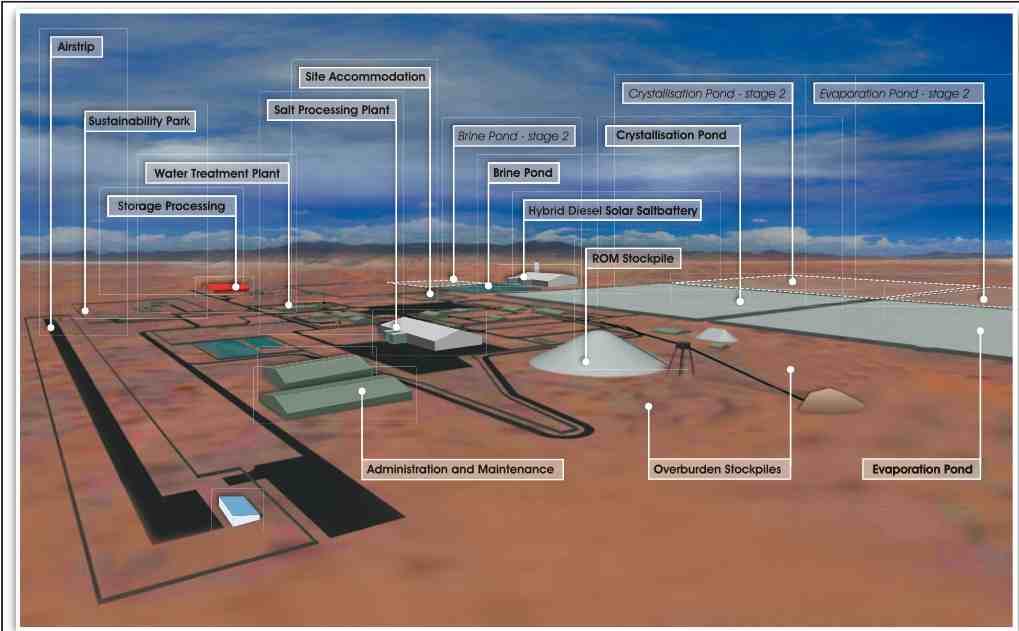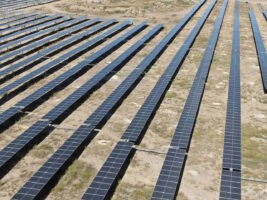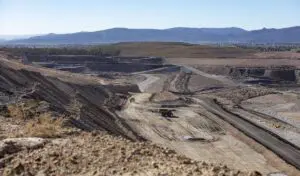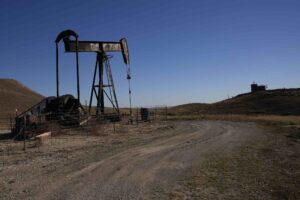The developers of a proposed $400 million underground rock salt mine in the Northern Territory are considering a 2MW solar PV array to provide some of its energy needs, and could add storage to the second stage of development.
Tellus Holdings has just completed a feasibility study on what would be the country’s first underground rock salt mine, the Chandler project 120km south of Alice Springs, and is looking to begin development in 2016, subject to approvals and a suitable off-take agreement.
CEO Duncan van der Merwe says Tellus is looking for renewable energy sources to offset, and to hedge, against the cost of diesel fuels. The fact that the mine would likely have a 25-year life adds to the interest.
“We are very serious about renewable generation,” he told RenewEconomy. “We see it as a hedge against future diesel fuel price escalation. We are seeing diesel prices up exponentially, and we are seeing renewable prices going down.”
The interest of Tellus comes as the mining industry looks more closely at renewables, particularly solar, to offset soaring fossil fuel prices. Diesel costs range from $300/MWh to $450/MWh or more. Solar PV costs are less than half of that, although the novelty of the technology, and questions about integration, has led to caution amongst miners.
However, dozens of companies with projects worth several billion dollars applied for grants to the Australian Renewable Energy Agency as part of its off-grid and remote energy support program.
Rio Tinto won funding for a solar plus storage project of up to 6.7MW at its Weipa bauxite mine, but the future of other projects is up in the air because the Abbott government wants to close ARENA.
Van der Merwe said once some mines had successfully used solar or other renewables, others would follow.
“The renewable energy industry has been trying to get into the mining industry in a big way. But the reality is that when a mining procurement officer makes a decision, he does not go to university, or to government grant programs, he looks at other mines.
“If one miner builds one (solar project), and it works, and the ventilation system works 24/7, and the mine continues to function, then you will get rapid uptake in the mining community.”
Van der Merwe said Tellus was “technology risk averse” but was comfortable enough with solar to be satisfied that the economics and technology would stack up in difficult remote conditions.
He said central Australia had pool of renewable energy expertise that could be used. “It all makes sense for our project.”
Tellus estimates that its power demand will be between 6 and 10MW of capacity. The use of a 2MW solar array would reduce the amount of diesel used.
In a second stage of development, the company would be interested in adding storage, such as molten salt storage with solar thermal. “We don’t want to take technology risk. Tried and tested technologies will get the first priority.”
He said the addition of storage would be subject to its own investment case. “Our intention is to knock off as much diesel consumption as we can.
“At the end of the day, it is a simple economic decision. When you model a 25-year mine life, and you model the cost of diesel, it is the second largest operational cost.
“It will have a direct impact on the bottom line. If we can mitigate that cost and hedge against it, then we will look at that.”
He said it was unlikely that Tellus would seek government grants to support the project. Below is a schematic from a 2012 report that includes the idea of a proposed hybrid diesel/solar/storage facility.









